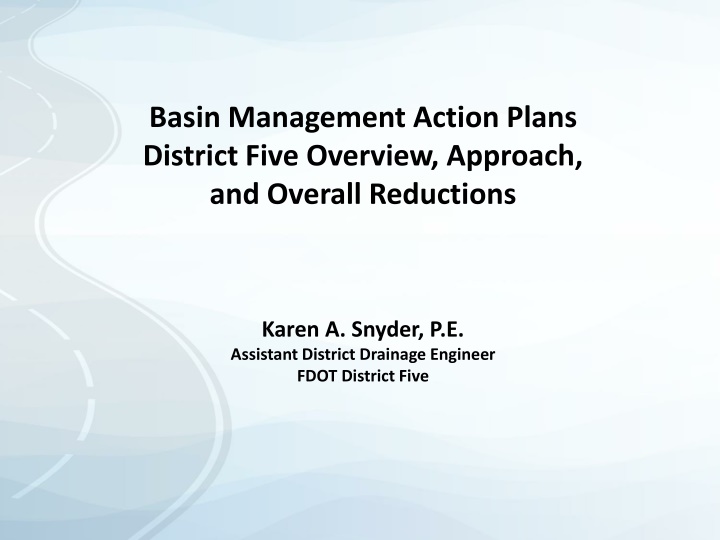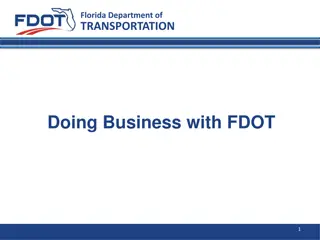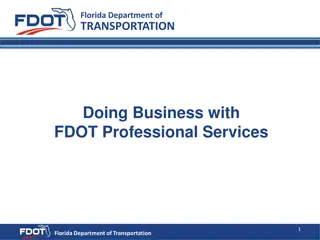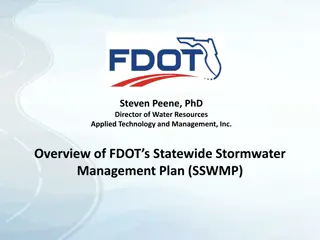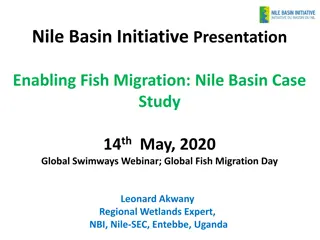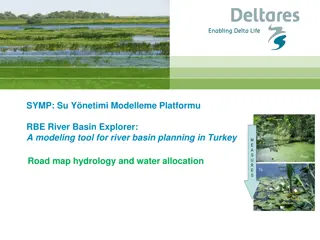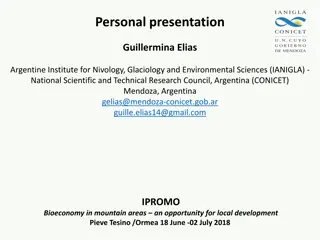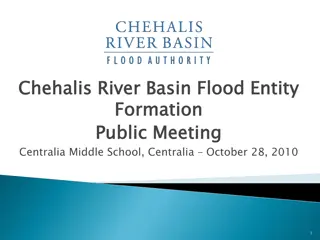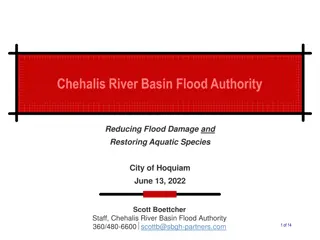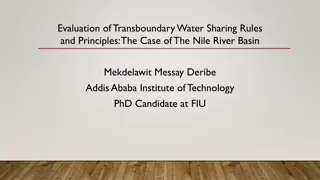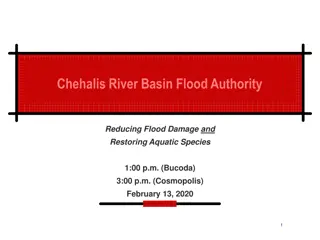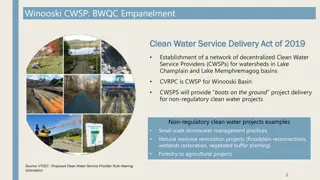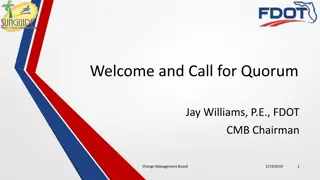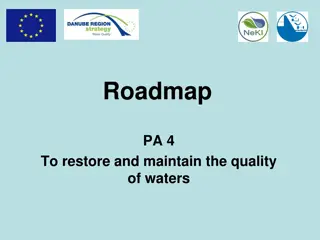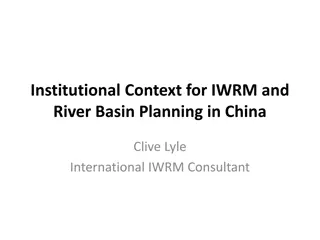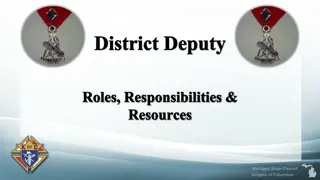Basin Management Action Plans in FDOT District Five
This overview discusses the implementation of Basin Management Action Plans (BMAPs) in Florida Department of Transportation (FDOT) District Five to address impairments, meet Total Maximum Daily Load (TMDL) requirements, and involve stakeholders in water quality monitoring and restoration efforts.
Uploaded on Sep 07, 2024 | 0 Views
Download Presentation

Please find below an Image/Link to download the presentation.
The content on the website is provided AS IS for your information and personal use only. It may not be sold, licensed, or shared on other websites without obtaining consent from the author.If you encounter any issues during the download, it is possible that the publisher has removed the file from their server.
You are allowed to download the files provided on this website for personal or commercial use, subject to the condition that they are used lawfully. All files are the property of their respective owners.
The content on the website is provided AS IS for your information and personal use only. It may not be sold, licensed, or shared on other websites without obtaining consent from the author.
E N D
Presentation Transcript
Basin Management Action Plans District Five Overview, Approach, and Overall Reductions Karen A. Snyder, P.E. Assistant District Drainage Engineer FDOT District Five
FDEP TMDLs and BMAPs Total Maximum Daily Load (TMDL) established for designated impaired water bodies Basin Management Action Plans (BMAPs) restoration plans implemented by FDEP to address current impairments and meet designated TMDLs BMAP development lead by FDEP in cooperation with local stakeholders and other state agencies
FDEP TMDLs and BMAPs TMDL = Total Maximum Daily Load Maximum amount of a particular pollutant (Nitrogen, Phosphorous, Bacteria, etc.) that a surface water can absorb and still meet water quality standards that protect human health and aquatic life. BMAP = Basin Management Action Plans TMDL is broken down into allocations or sufficiency requirements for each stakeholder
TMDLs and BMAPs FDOT District Five 13 BMAPs Active Stakeholder JPAs with local stakeholders Joint water quality monitoring 1 Reasonable Assurance Plans (RAP) Mosquito Lagoon RAP JPA with Volusia County Active Stakeholder
TMDLs and BMAPs FDOT District Five Surface Water BMAPs North Indian River Lagoon - IRL Banana River Lagoon - IRL Central Indian River Lagoon - IRL Ocklawaha River Lake Harney, Lake Monroe, and Middle St. Johns River Lake Jesup Lake Okeechobee Lake Toho Orange Creek
TMDLs and BMAPs FDOT District Five Spring BMAPs Wekiva River Silver Springs Rainbow River Volusia Blue
Statewide Springs Initiative FDEP Spring BMAPs Adopted October & December 2016 Wekiva River, Rock Springs Run, & Little Wekiva Canal Silver Springs Rainbow Springs Upper Wakulla Rivera and Wakulla Springs Volusia Blue Spring New BMAP under development
BMAP Overall Approach and Reductions FDOT District Five FDOT Statewide Fertilizer Cessation Plan 2007 Need past maintenance contract records Estimate pollutant loads from fertilizer application Education Training Credits Illicit Discharge Training FDOT Operation Staff and Contractors Erosion and Sediment Control Training FDOT Operation Staff and Contractors Funded Design & Construction Projects Provide net benefit in addition to ERP requirements
BMAP Overall Approach and Reductions FDOT District Five Funded Design & Construction Projects New and annual BMAP updates Review Five Year Work Program Review project drainage calculations Prepare pollutant loading calculations Provide net benefit in addition to ERP requirements Implement project commitments for BMAP reductions Non-Traditional Stand Alone Projects Future allocations Regional and partnership opportunities
The Water Bill Major Tenants Signed by Governor Scott on January 21, 2016 Establishes requirements and strategies for protection of Outstanding Florida Springs MFLs Amends requirements for the development of BMAPs for improving impaired waterbodies Codifies the Central Florida Water Initiative (CFWI) Alternative water supply development and regional water supply plans
Springs MFL = Mean Flows and Levels The Water Bill requires WMD/FDEP to establish MFLs and recovery strategies for springs in danger of falling below the MFLs Potential Upcoming Changes Hold more water in our ponds to foster recharge Larger ponds Regional and partnership opportunities
Central Florida Water Initiative Tasked with preservation of the area water supply to meet future demand The region constituting CFWI will have an estimated deficit of 250 MGD of available groundwater in 2035. 250 MGD translates to 25% of our existing water uses. A water supply deficit from traditional sources of 25% is significant.
Central Florida Water Initiative Forms of preservation Take less out of the ground Conservation Re-Use Stormwater and Reclaimed Water Put more into the ground Pump water over to higher recharge areas Drainage Wells?
CFWI CFWI
